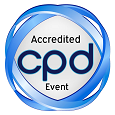
Muhammad Shahid
University of New South Wales, Australia
Title: Thermal Sterilization of Microorganisms
Biography
Biography: Muhammad Shahid
Abstract
Clean and safe drinking water is a limited natural resource and a public good fundamental to life and health. The human right to water is indispensable for leading a healthy life in human dignity, but unfortunately these water assets are being depleted immensely all over the world. The aim of the bubble column evaporator (BCE) theme is to develop new concepts, and to improve existing purification technologies in terms of energy and cost effectiveness, which can guarantee high-quality water in the future. The simple bubble column evaporator presents an interesting challenge to our understanding of the detailed processes involved in bubble rise rate, water vapour evaporation and the variable effects of different solutes on bubble coalescence inhibition. Fortunately, the most important and common salt, sodium chloride, acts in solution to inhibit bubble coalescence and that behaviour has been applied to the development of a wide range of useful techniques based on the bubble column evaporator . This complex system has recently been used to develop a novel method for sub-boiling, thermal sterilization, a thermal desalination and its improvement and a new method for the precise determination of enthalpies of vaporization (ï„Hvap) of concentrated salt solutions. A bubble column was used to study sterilization using bubbles of different sizes (mm to cm) produced via bubble coalescence or by inhibiting coalescence through the addition of NaCl. The rapid transfer of heat from small, hot (dry) gas bubbles to the surrounding water was used as an effective and energy efficient method of sterilizing contaminated water. It is shown that the continuous flow of (dry) hot gases, even at 250°C, only heat the aqueous solution in the bubble column to well below sub-boiling temperature and it was also established that coliforms are not significantly affected by even long term exposure to this solution temperature. Hence, the effects observed appeared to be caused entirely by collisions between the hot gas bubbles and the coliform particles close to the sinter, where the gas bubbles were still hot enough (i.e., within 5-10 cm of the sinter surface). It was also established that the use of high air inlet temperatures can reduce the thermal energy requirement to only about 14 % (about 64 kJ/L) of that required for boiling (about 450 kJ/L).

